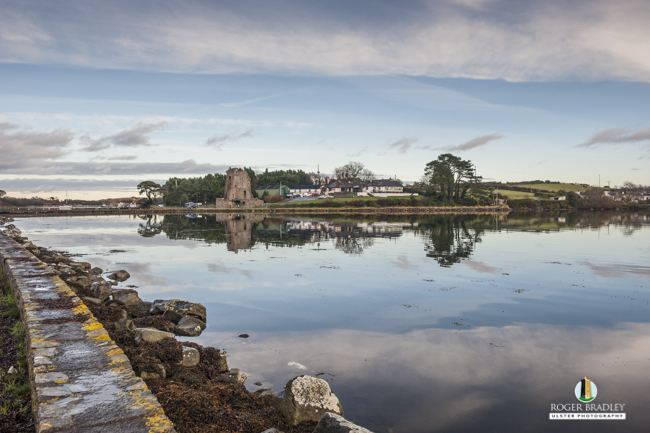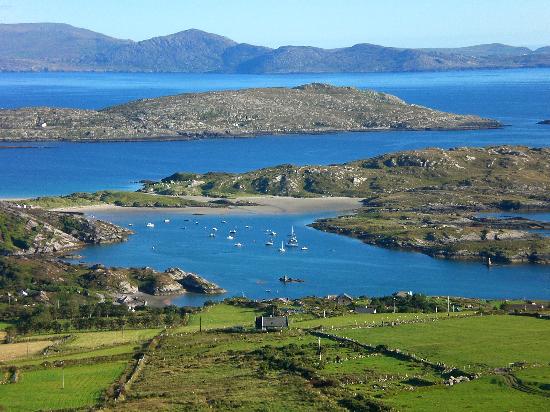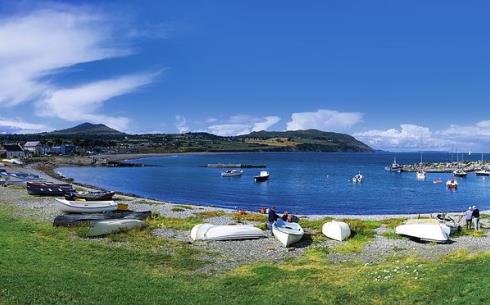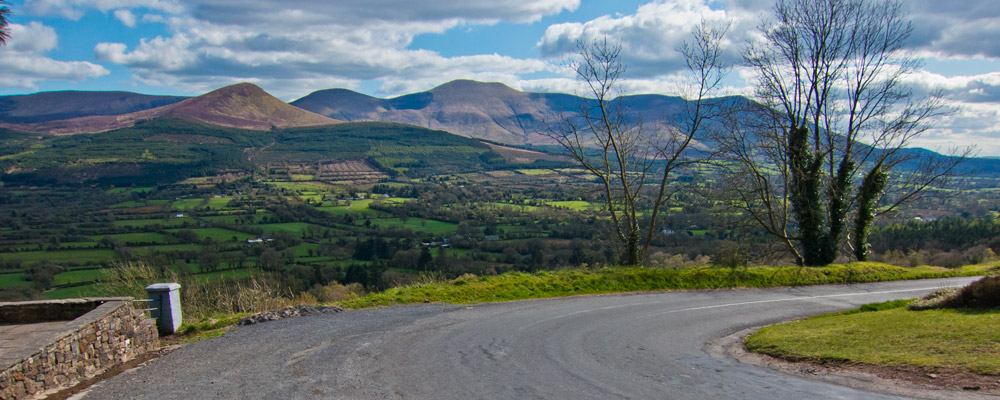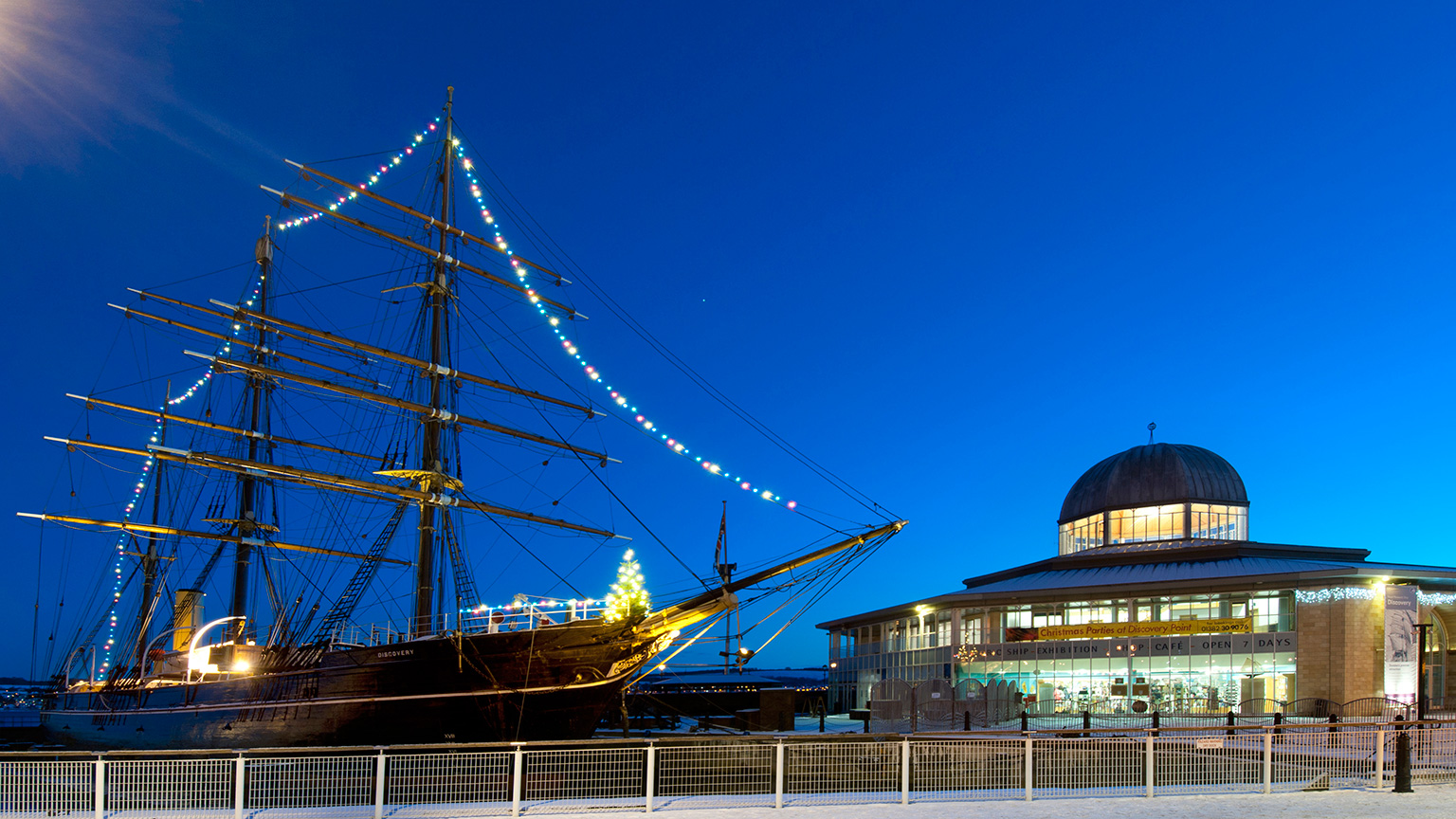Sketrick Castle, County Down
Loughside, mid-way up the western shore is Sketrick Castle. This large, four storey tower house guarded the causeway to Sketrick Island and was actively involved in warfare in the 16th century. The immediacy and need for the defence is vitally evident in this watery landscape....


